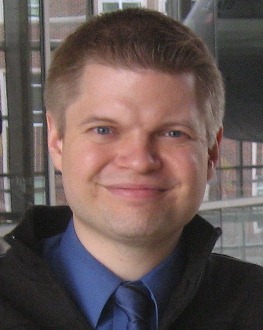PhD alum on ASEE's "20 under 40" list
Reprinted from PRiSM by the American Society for Engineering Education (Sept. 2014) by Sarah Khan, Mary Lord, and Mark Matthews
Today’s faculty under 40 are powered by ideas in the classroom and the lab.
They hail from across the United States and beyond, migrating to engineering education via pathways as far flung as an entrepreneurial start-up, competitive gymnastics, medicine, and the Navy. Their research topics are equally varied, from cancer to energy storage and a field so rarefied – nanogeochemistry – that its Facebook page has just four “Likes.”
What these accomplished under-40 academics all share, however, is a demonstrated talent for teaching, real-world research, or – as is often the case – both. They were picked to highlight the role of engineering and engineering technology institutions in shaping a globally competitive workforce, based on recommendations by schools and colleagues and research by Prism staff. The 20 individuals profiled on the following pages are not a scientific sample. Rather, they represent a balance of geography, discipline, and type of institution. The common denominator is imagination.
Looming large through these stories is government funding, particularly money that offers a leg up for young faculty struggling to see their ideas bear fruit in the lab. It’s a safe bet the pathbreaking work described here, in such areas as earthquake-resistant construction, nuclear weapons detection, neuroimaging, and women’s reproductive health, wouldn’t have happened without the basic research dollars that flow from the National Science Foundation, the Department of Defense, and other government agencies.
Shawn Jordan: DIY Engineering
 As a Purdue graduate student in 2005, Shawn Jordan co-led his team to victory in a Rube Goldberg contest – and snagged a Guinness world record – with a machine that took 125 steps to turn on a flashlight. The following year, his team won again, this time with a contraption that “ate my homework” in 215 steps, including a player-piano rendition of the school’s fight song.
As a Purdue graduate student in 2005, Shawn Jordan co-led his team to victory in a Rube Goldberg contest – and snagged a Guinness world record – with a machine that took 125 steps to turn on a flashlight. The following year, his team won again, this time with a contraption that “ate my homework” in 215 steps, including a player-piano rendition of the school’s fight song.
To Jordan, the exercise of turning simple tasks into complex contortions takes creative engineering to its limit, spurring students to “design the problem as well as the solution.” Thus it’s an ideal teaching tool. He introduced Rube Goldberg to high school students while pursuing an engineering education doctorate. Now, as an assistant professor of engineering at Arizona State’s College of Technology, he is using it in a project to develop a next-generation science and engineering curriculum for Navajo middle school classrooms. In the process of designing and building the machines, students incorporate stories about their culture and daily lives. He also incorporates Rube Goldberg ideas in STEAMLabs, a rapidly growing series of clubs that combine engineering design and art.
Jordan’s approach, which merges social science and engineering, has struck a responsive chord with funding agencies eager to identify successful STEM teaching techniques. Since 2011, he has obtained $1.9 million for his research, including a National Science Foundation CAREER award. Currently, NSF is backing his study of the community of “makers,” whose inventions draw crowds to Maker Faires around the country, to learn what compels them to tinker and innovate. The resulting evidence, he argues in an abstract, “will transform the conversation of who young makers could become, linking making with engineering in the same way that students who excel in science and math are pointed toward engineering by parents and career counselors.”
The project appeals to his interest in the human side of engineering. “I was always drawn toward psychology,” he says. “Engineering education brought together my interests in people with my interests in engineering.”
You can see the full 20 under 40 list here.
